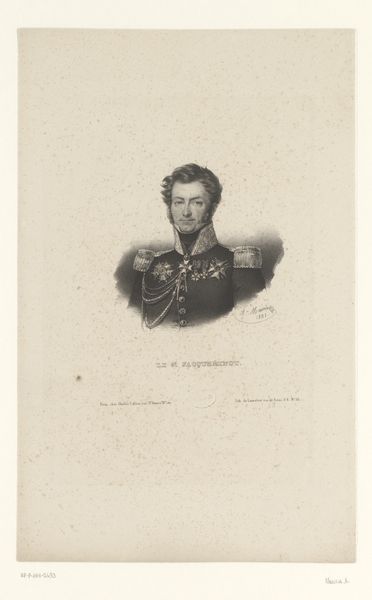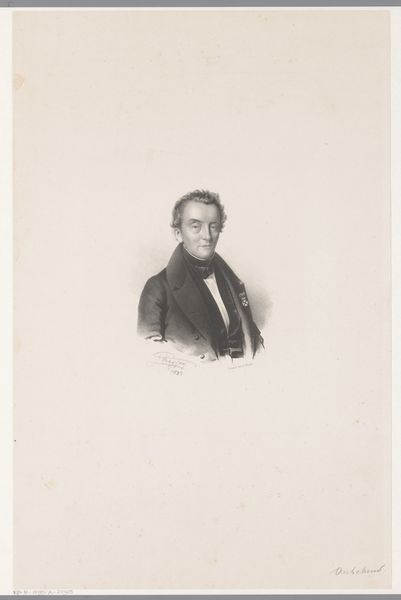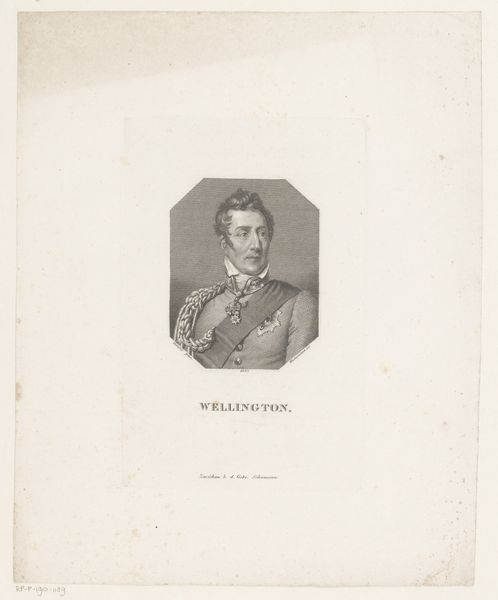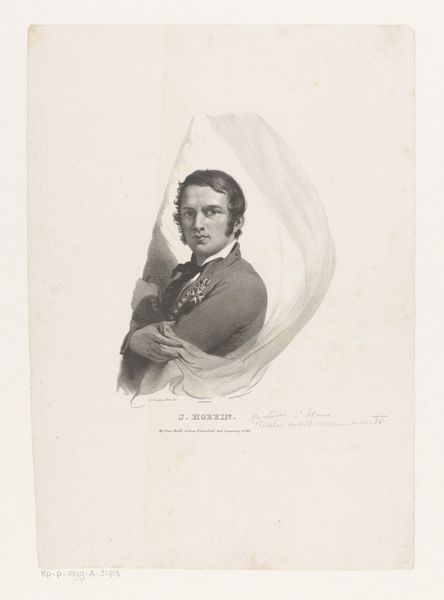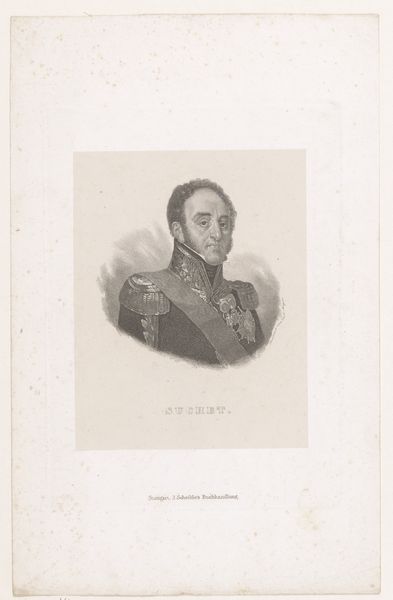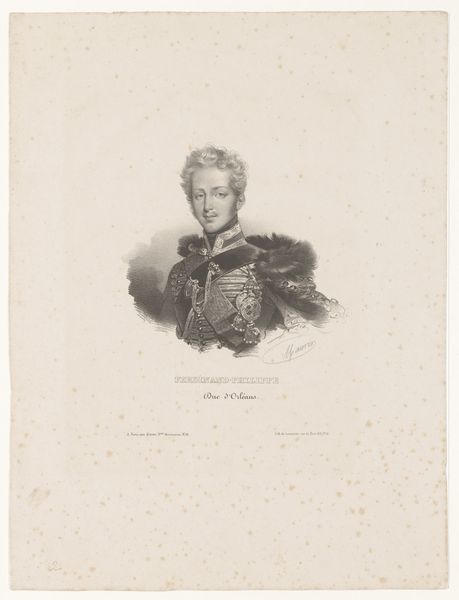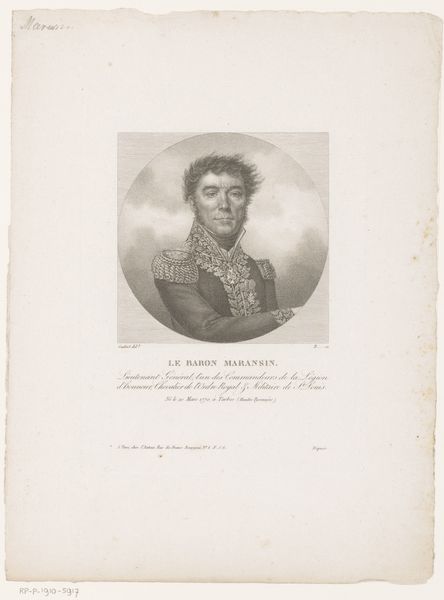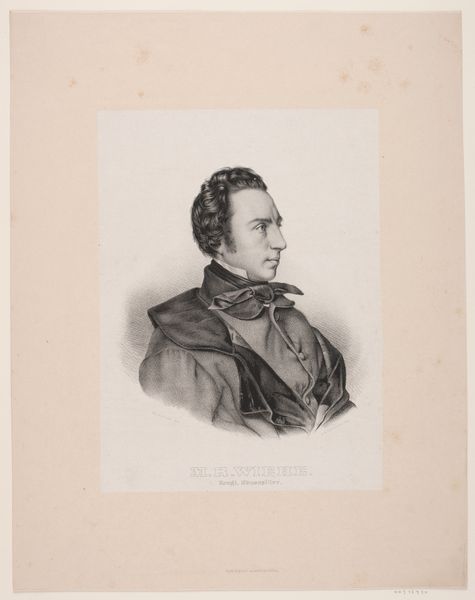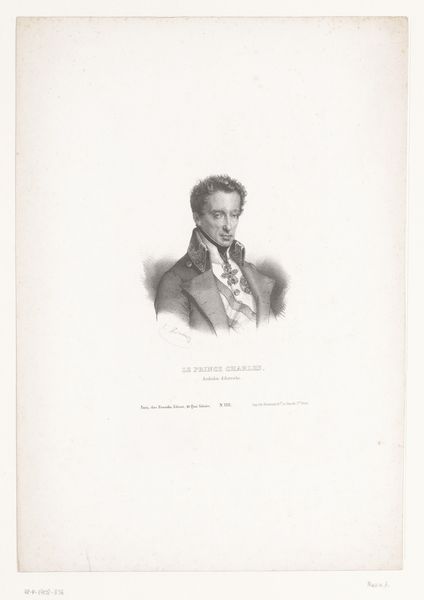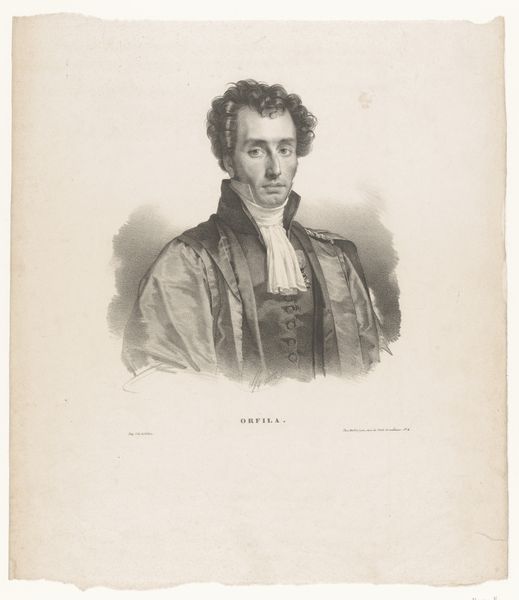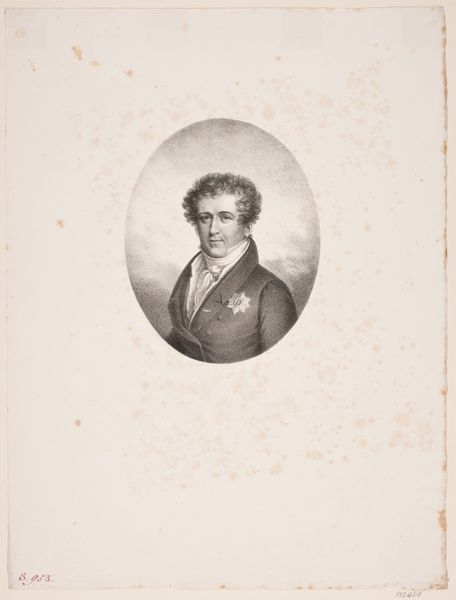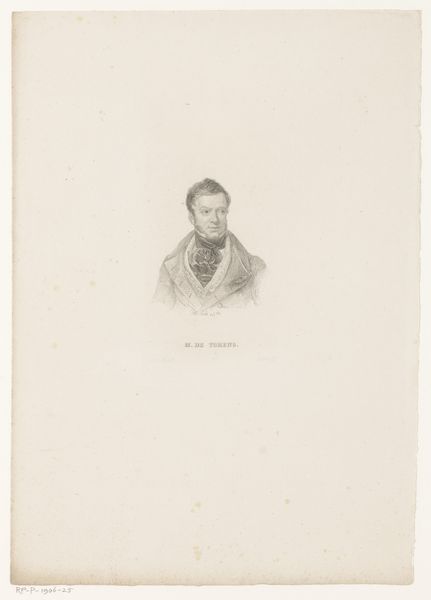
Portret van Louis-Auguste-Victor Ghaisne de Bourmont, graaf van Bourmont 1832
0:00
0:00
print, engraving
#
portrait
# print
#
romanticism
#
history-painting
#
engraving
Dimensions: height 364 mm, width 275 mm
Copyright: Rijks Museum: Open Domain
Curator: We're looking at an 1832 print by Antoine Maurin, currently held at the Rijksmuseum. It's titled "Portret van Louis-Auguste-Victor Ghaisne de Bourmont, graaf van Bourmont", a mouthful I know. Editor: It has a rather formal air, wouldn't you say? A sense of stern self-importance emanating from this gentleman with the magnificent epaulettes. The etching has such incredible precision. Curator: Absolutely. Maurin captures de Bourmont in his military attire, hinting at valor. The symbolism is overt. It reflects Romanticism's fascination with heroism. Note the calculated details: the impeccable uniform, the gaze fixed just beyond the viewer, suggesting a man of vision, of destiny. Editor: Fascinating. From my perspective, I'm particularly interested in how these printed portraits functioned in 19th-century society. Were these mass-produced? Did this method allow his image to be widely distributed to bolster his image? Curator: Quite likely, printmaking granted greater accessibility. The symbolism here—military prowess and aristocratic bearing—becomes almost… standardized, part of a reproducible visual language affirming social hierarchies. The lithographic process and the artistic decisions reinforced these ideas in the social consciousness. Editor: So, a powerful convergence of material means and cultural messaging? These printed images solidified certain narratives through consumption and availability, transforming de Bourmont into something beyond just a man but into a representative figure. It's very interesting how the printmaking impacts social structures, right? Curator: Precisely. These visual motifs become embedded in our collective understanding, often influencing political leanings as well. This image really captures an intersection where artistry, material practice, and ideologies converge. Editor: Agreed. It reminds me how objects contain so much. Curator: Me too. It’s not just about the image itself, but the network of relations it carries.
Comments
No comments
Be the first to comment and join the conversation on the ultimate creative platform.
